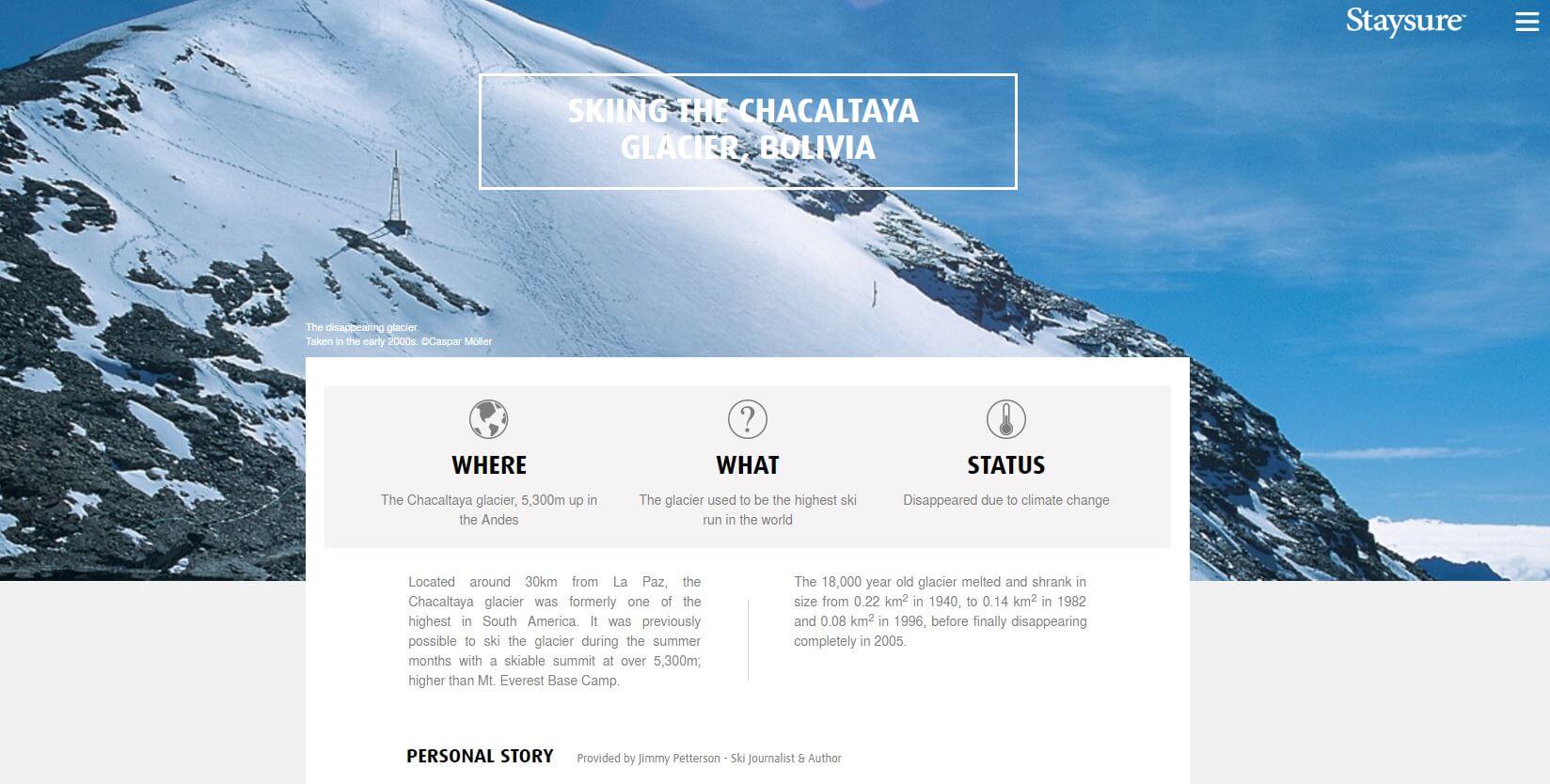1) Create customer personas
Every piece of content you create should be relentlessly focused on your customers. I cannot stress this enough: your content isn’t about you—it’s about them. But if you don’t know who your audience is, you can’t create content that appeals to them. That’s where customer personas come in.
Think of a persona as a “snapshot” of your target audience. You want your personas to answer the following questions:
- What are your key demographics? Do they share any traits in common, such as age, gender, education, marital status, or location?
- What title do your customers typically have? Are you typically selling to bigwig CEOs, small business owners, or someone else? What is the average salary of this target audience?
- What personality traits govern a purchase? Are your customers cautious about making new investments? Are they first in line to adopt new technology or do they adapt slowly?
- What do they want from your offering? What goals will your product or service help them achieve? What do they value, that your offering specifically appeals to?
- What holds them back from making a purchase? Is your customer hesitant, because they haven’t been convinced that your product or service will benefit them? Does a high price tag stop them in their tracks? Or is something else—such as the inability to convince a superior of why your offering is necessary?
- What persuades your customers? How do you overcome whatever objections your customers might have? Are they seeking social proof or ROI reassurances? Do they need specs or are they looking for simple advice on how to use your product? Are there any sources they trust?
- What other details are relevant? Can you appeal to your target audience through their hobbies? Their favourite blogs? Showcasing other customers? What extra information will help you sell to this lead?

Our ‘Disappearing World’ piece for Staysure aimed to appeal to an audience that cared about the environmental impacts of travel
For example, if you were a SaaS company building customer profiles, they might look like this:
Persona #1
Role/Title
CEO
Profile
Age: 40 – 65
Location: Urban/suburban
Salary: £100,000+
Education: Bachelor’s
Traits: Cautious of new expenditures, but wants software that will improve business day-to-day.
Appealing Factors
Goals: Expand business, grow sales, smooth daily operations.
Values: Simple UI, instructions in plain English, technology with low barrier to entry
Objections: Too much technical jargon, unnecessary features.
Persuaded by: Testimonials, product demonstrations, staff endorsement.
Trusts: Prominent sources (e.g. Moz, HubSpot)
Persona #2
Role/Title
Graphic Designer
Profile
Age: 25 – 40
Location: Urban
Salary: £20-30,000
Education: Master’s
Traits: Wants cutting edge software, but needs to be able to convince management.
Appealing Factors
Goals: Ease day-to-day, improve performance.
Values: Attention to detail, customisability, simple selling features.
Objections: High price point, complicated UI.
Persuaded by: Performance improvement reviews, technical specs, stat breakdowns.
Trusts: Word-of-mouth from other designers.
By better understanding your customers, you’ll be able to better target them with specific content that appeals to them, engages them, and overcomes their objections. The irony of this is that, according to the Content Marketing Institute, 70% of UK marketers consider creating more engaging content to be their top priority, but only 46% prioritise a better understanding of their audience.
So where do you get the information you need to construct your customer personas? Richard breaks down a number of ways in which you can identify your target audience, including data from Google Analytics, Facebook Insights, and YouTube viewing statistics.
2) Nail your voice and tone
In addition to building unique personas for your customers, you should also develop a voice and tone guide that copywriters can fall back on. While these two concepts might seem interchangeable, there’s a very important difference between them, as Ann Handley notes in her book Everybody Writes, “Voice doesn’t change, but your tone should, depending on the feeling you are trying to convey.”
Voice carries your brand identity. It’s the differentiator that sets you apart from your competitors and it should live on every piece of your content—from your homepage to your Twitter feed. An inconsistent voice or one that regularly redefines itself feels unstable and destroys their credibility.
Tone changes to appeal to specific customer personas. For example, your brand might embody “fun and exciting,” but maybe that manifests as “personable” on your FAQ page and “cheeky” in some of your targeted advertising. Joel Klettke’s strategy for defining tone is to rein it in with “X, but not Y” statements, such as:
- Friendly, but not informal
- Loud, but not obnoxious
- Young, but not immature
- Fun, but not irreverent
- Simple, but not dumbed down

Wiggle’s guides do an excellent job of engaging a relevant audience, with a friendly and informed tone
3) Ideate 20-30 concepts
It may disappoint you to learn that my blog posts are not the result of spontaneous bursts of inspiration. There’s no moving dream sequence, no lightning bolt, no heavens parting, and no inspiring rays of light.
Instead, each time I write a new blog post, I consult a list of 31 possible topics that I have saved on a spreadsheet. Builtvisible and I brainstormed up this list months ago. We came up with was a list of article titles that complement their current content offerings, fall within my areas of expertise, and (hopefully) appeal to you—the reader.
The end result is a handy list that helps me stave off writer’s block.
There are two key elements to a solid ideation strategy:
1. Organise your content under a handful of wider “umbrella categories.” For example, my blog posts this past month have all focused on content marketing strategies. Think of these as keywords, if that helps.
2. Use research and customer insights to inform your topics. You could publish the best piece in the world and it wouldn’t matter if your audience didn’t want to read it. Use tools, such as Builtvisible’s Content Strategy Helper, to mine trending data from sources like Google Search Trends, Twitter, YouTube, Reddit, and Google News. Figure out what users are searching for and where your area of expertise intersects with their questions.
4) Plan Out a Content Calendar
I’ve written before on why publishing content on a regular basis is key to customer retention. It gives your readers something new to look forward to, adds new value to your website, and keeps your content offerings fresh—which improves your search engine relevance, among other things.
But you can do more with a content calendar than leave yourself a Post-It note reminder to “write a new blog post.” Instead, consider Coca-Cola’s 70/20/10 content principle:
- 70% of Coca-Cola’s offerings are considered “low risk.” These are their “bread and butter” offerings that customers love consuming, time and time again. In content marketing terms, these would be your how-to’s, on-topic blog posts, and generally accepted best-practise advice.
- 20% of Coca-Cola’s offerings are “medium risk.” This content is more innovative and engages with consumers on a deeper level. It may also try to reach a new demographic or tackle controversial topics.
- 10% of Coca-Cola’s content is “high risk.” This content introduces new challenges and front-lines brand new ideas. You have to be prepared to fail with these content offerings, but sometimes you strike gold… as Old Spice’s The Man Your Man Could Smell Like commercial proved a few years back.
If your content is always safe, it will stagnate. Instead, try shaking up the status quo every once in a while. You certainly don’t need to stick to Coca-Cola’s 70/20/10 strategy, but you should occasionally rock the boat and give your readers something to form strong opinions over.

Ford’s ‘Don’t Like and Drive’ campaign – a simple yet thought provoking use of Instagram
Of course, you can also plan out what type of content you will publish. Shaking up the format of your content offerings and targeting users at different stages of the buyers journey will give your users more reasons to return to your website.
5) Create content with a goal
To quote Builtvisible’s Introductory Guide to Content Marketing:
“Content marketing is all about creating content that is of real value to your potential customers with the underlying intention of motivating them to take a particular action. This action is any interaction with your brand that drives profitability—whether it’s sharing your content with their network, signing up to your newsletter, purchasing your latest product or writing a review.”
In other words, the very definition of content marketing already inherently includes some goals:
1. Our content should create real value for our customers.
2. Our content should motivate them to take a particular action.
This is where having a content plan with clearly defined goals becomes necessary. Figure out who you’re targeting with your content, what value you want to impart (whether that’s education or entertainment), and what actions you want to prompt. Then figure out how to distribute and promote your content so that it reaches as much of your audience as possible.
Finally, make sure that your content contributes to the big picture. All savvy SMEs should have a business plan that lays out your business’s specific goals. Make sure your content contributes to these goals and furthers your brand.
Conclusion: our work is never done
But wait, you’re thinking. If customer personas, brand identity, brainstorming, a content calendar, and a business plan are all it takes to built a content marketing strategy, then why does Builtvisible’s Content Strategy include…
- Site Content Audit
- Content Quality Review
- Metadata Audit
- Content Gaps Analysis
- Competitor Content Analysis
- SERP Analysis
- Social Trends Research
- Social Influencer and Audience Analysis
- Content Ideation
- Editorial Strategy and Content Plan
- SEO Copywriting
Well, that’s because a good content marketing strategy never stops improving. SMEs with a strategy can keep refining their strategy over time, thanks to data-driven insights. That means higher value content offerings, for both you and your customers.
So don’t let the scope of content marketing strategies frighten you. The return on investment is well worth the cost—an SME with a plan behind their content is one worth paying attention to.

